
APOLLO-11 HASSELBLAD
CAMERAS
by Phill Parker
The camera equipment carried on the Apollo-11 flight
was comprehensive. In addition to the usual TV and small-film cameras
on board, there was a special camera for near-distance stereoscopic
shots of the moon. And, of course, there were also the cameras which,
for this article, are the most important, viz., three Hasselblad
500ELs.
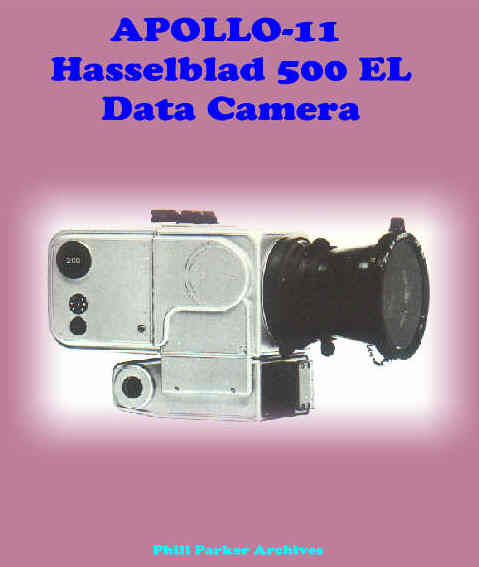
Two of the 500ELs were identical to the ones carried on
the Apollo-8, -9 and -10 flights. Each had its own Zeiss Planar
f-2.8/80 mm lens. A Zeiss Sonnar f-5.6/250 mm telephoto lens was also
carried. One of the conventional 500ELs, along with the telephoto
lens and two extra magazines, was in the Apollo-11 Command Module
throughout the flight. The other conventional 500EL, and two extra
magazines as well, were placed in the lunar module. Also in the lunar
module - and making its first journey in space - was a Hasselblad
500EL Data Camera, which was the one to be used on the moon's
surface.
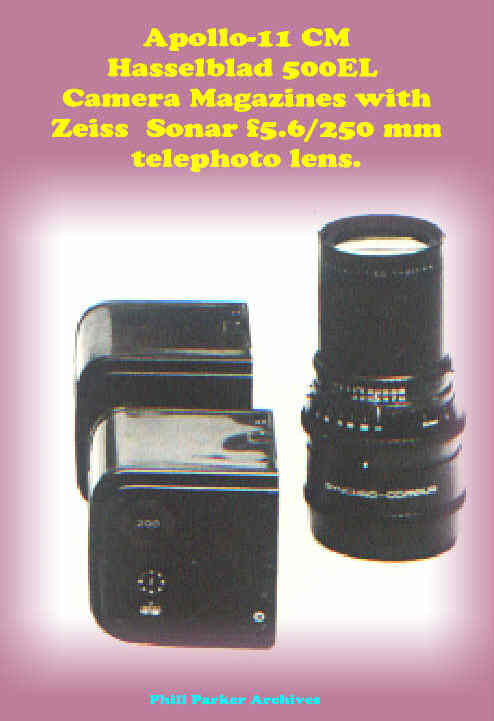
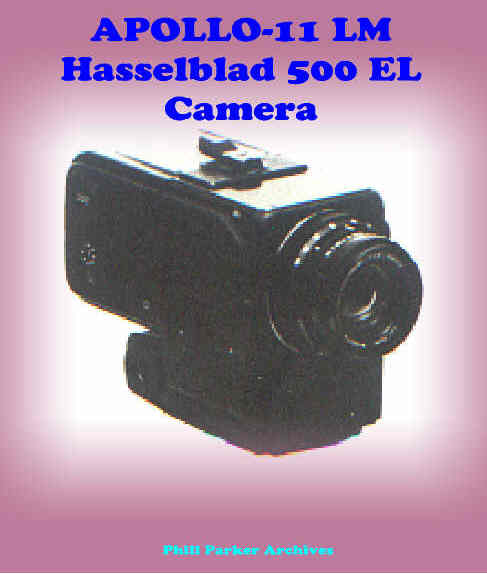
The Data Camera, like the other two 500ELs, was a
modified standard 500EL camera but differed from the others in
several ways:
(1) The Data Camera was fitted with a so-called Reseau
plate. The Reseau plate was made of glass and was fitted to the back
of the camera body, extremely close to the film plane. The plate was
engraved with a number of crosses to form a grid. The
intersections were 10 mm apart and accurately calibrated to a tolerance of 0.002 mm. Except for the larger central cross, each of the four arms on a cross was 1 mm long and 0.02 mm wide.
The crosses are recorded on every exposed frame and provided a means
of determining angular distances between objects in the
field-of-view.
(2) The Data Camera was fitted with a new Zeiss lens, a
Biogon f-5.6/60 mm, specially designed for NASA, which later became
available commercially. Careful calibration tests were performed with
the lens fitted in the camera in order to ensure high-quality,
low-distortion images. Furthermore, the lens of the camera was fitted
with a polarizing filter which could easily be detached.
(3) The Data Camera was given a silver finish to make
it more resistant to thermal variations that ranged from full Sun to
full shadow helping maintain a more uniform internal temperature. The
two magazines carried along with the Data Camera also had silver
finishes. Each was fitted with a tether ring so that a cord could be
attached when the Lunar Module Pilot lowered the mated magazine and
camera from the lunar module to the Commander standing on the lunar
surface. The exposed magazines were hoisted the same way.
(4) The Data Camera was modified to prevent
accumulation of static electricity. When film is wound in a camera,
static electricity is generated on the film surface. Normally, this
electricity is dispersed by the metal rims and rollers that guide the
film, and by the humidity of the air. In a camera fitted with a
Reseau plate, however, the film is guided by the raised edges of the
plate. As glass is a non-conductor, the electric charge that builds
up at the glass surface can become so heavy that sparks can occur
between plate and film - especially if the camera is used in a very
dry environment or in vacuum. Sparks cause unpleasant patterns to
appear on the film and can be a hazard if the camera is used in an
atmosphere of pure oxygen. To conduct the static electricity away
from the Reseau plate in the Data Camera, the side of the plate
facing the film is coated with an extremely thin conductive layer
which is led to the metallic parts of the camera body by two contact
springs. Contact is effected by two projecting silver deposits on the
conductive layer. The Reseau plate, or register glass, is not a new
development in photography. What is most remarkable, however, is that
the group of Hasselblad staff working on NASA camera projects in
collaboration with Carl Zeiss was successful in applying the idea to
a small camera - like the Hasselblad 500EL Data Camera. This camera
is not only useful in space photography, it is particularly suitable
for all kinds of aerial photography. The special cameras produced in
the past for aerial photography were large and intended for a large
negative-format - frequently meaning high prices. The Hasselblad
500EL Data Camera with its Reseau plate produced a small and
comparatively low-cost camera which gave satisfactory results in
aerial photographic work.
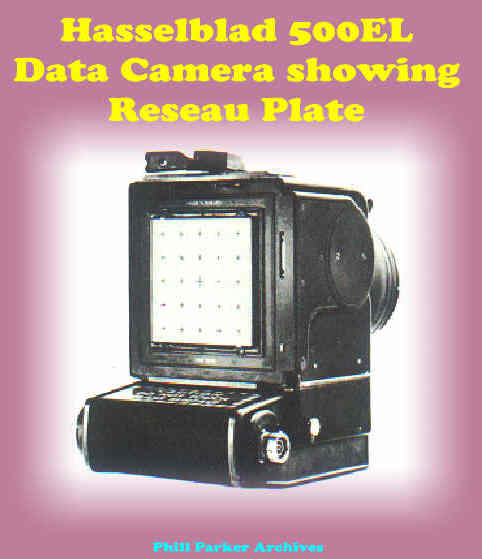
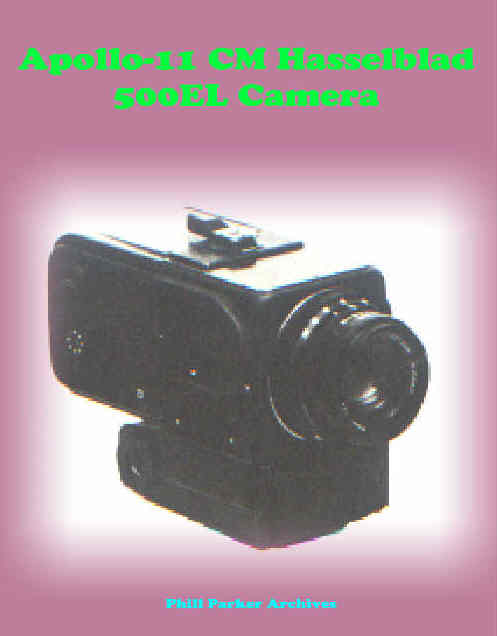
Finally, The film used on Apollo-11 was the same type
carried on the other flights - a Kodak special thin-based and thin
emulsion double-perforated 70 mm film - which permitted 160 pictures
in color or 200 on black/white in each loading.
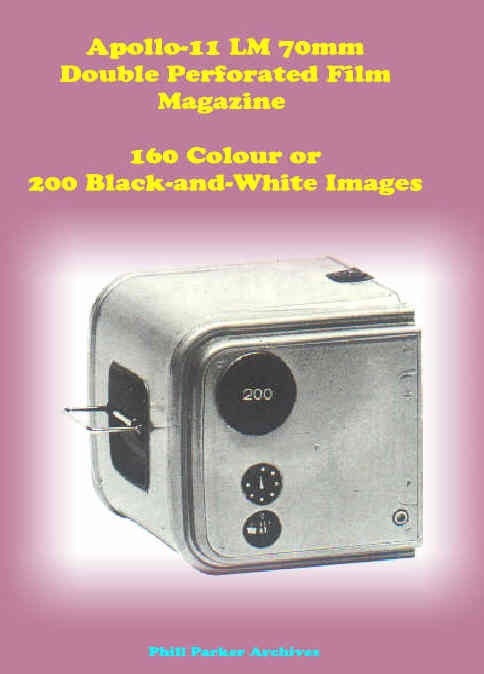
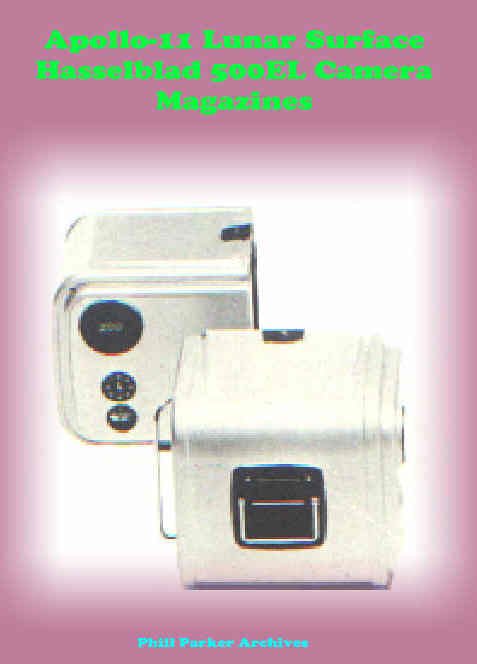
This article was prepared by Phill Parker (UK) from
media material supplied by Viktor Hasselblad in 1969.
Constructive editorial comments were furnished by Eric
Jones (ALSJ).
Additional information can be found in NASA SP-5099
Photography Equipment and Techniques: A Survey of NASA Developments
by Albert J Derr.
E-mail
spaceuk@netcomuk.co.uk















